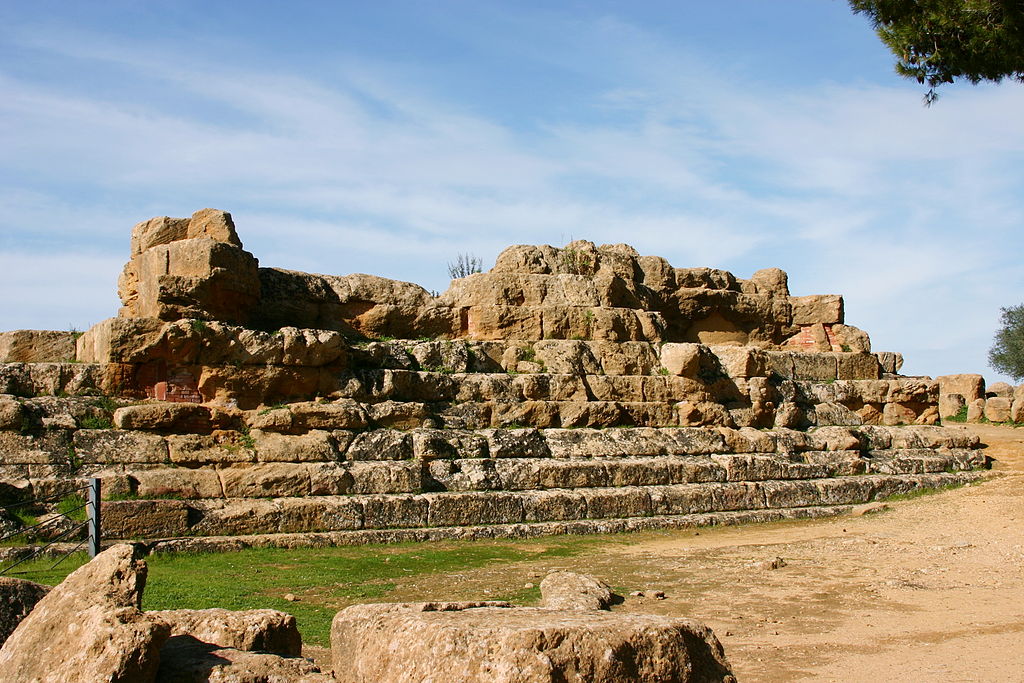
A colossal statue of the sky-bearing Greek titan Atlas which was buried for hundreds of years among ancient ruins has been reconstructed to claim its rightful place at the Temple of Zeus in Agrigento, Sicily, after a 20-year-long research and restoration project.
The giant Greek Atlas statue, towering at eight meters tall (26ft), dating back to the 5th century BC, was one of almost 38 that decorated the Temple of Zeus, believed to be the largest Doric temple every built despite never being finished.
“The Atlas will become one of the highlights of the Valley of the Temples,” said Francesco Paolo Scarpinato, a cultural heritage assessor, in a joint statement with the Sicilia governor, Renato Schifani. Adding, “We can finally introduce this imposing work to the international community.”
When was the Greek titan Atlas statue found near the temple of Zeus in Agrigento?
The statue was discovered in 1812 by Charles R Cockerell, a British architect who was visiting Agrigento to learn about the ruins of the ancient Greek city of Akragas, which was founded in around 582 BC by ancient Greek colonists. The young architect was among the first to notice that a huge piece of sandstone near the told Temple of Zeus did not form part of the sanctuary’s pediment, but rather the head of a statue of Atlas.
In Greek mythology, Atlas was a titan or god, who was tasked with holding up the sky on his shoulders after being defeated by Zeus, one of the next generation of gods called Olympians.
Over time, Cockerell identified more pieces of the statues. According to archaeologists, the Atlas statues were found on the outer area of the Temple of Zeus, made like that to give the impression they were holding the temple up and sustain the entire entablature of the sanctuary, which was never finished because it lacked a roof when the ancient Greek city of Akragas was conquered by the Carthaginians.
In the passing centuries, the temple was destroyed by earthquakes and in the 18th century it was quarried to provide building materials for Agrigento and Porto Empedocle.
The long-buried Atlas statue was rebuilt using blocks of sandstone and stacking each piece on shelves attached to a metal structure.
The Restoration Work
The first Atlas statue – housed inside the Archaeological Museum of Agrigento – was reconstructed after the archaeologist Pirro Marconi unearthed several artifacts in 1920. In 2004, the Valley of the Temples park launched an extensive research campaign led by the German Archaeological Institute of Rome and supervised by Heinz-Jurgen Beste.
This program provided fresh insights into the monument, but it also led to the cataloguing of 90 more fragments belonging to around eight different Atlas statues and the decision to assemble a new Atlas, bit by bit, and place it upright in front of the Temple of Zeus.
“The idea was to reposition one of these Atlases in front of the temple so that it may serve as a guardian of the structure dedicated to the father of the gods,” Roberto Sciarratta, director of the valley of the Temples park told The Guardian.
The Valley of the Temples is a UNESCO World Heritage site and boasts the largest area of any archaeological park in the world, covering around 1,600 hectares and encompassing the ruins of seven temples, city walls, an agora, an entry gate, as well as a necropolis and sanctuaries.

The nearby city-state of Akragas was one of the leading population centers in the region during the golden age of ancient Greece.
It was constructed on a high ridge over a 100-year-period, and its seven temples are considered among the most spectacular examples of ancient Greek architecture. More than 100,000 people lived in Akragas in the 5th century. According to the ancient Greek pre-Socratic philosopher Empedocles, a citizen of Akragas, people would “party as if they’ll die tomorrow, and build as if they will live for ever.”
The city was brought to ruins in 406 BC by the Carthaginians, and it did not return to its former glory until the rise of Timoleon in the late 3rd century BC. During the Punic wars, the Carthaginians defended the city against the Roman forces, who eventually took control of it in 210 BC.
The Romans renamed the city Agrigentum, and under their rule it saw a period of monumental urban redevelopment with new public buildings, including at least two temples.
The Atlas statue stands over all that remains of the temple itself – a thick stone base, piled with crumbled pillars and blocks of stone.
“The work we have carried out on the Atlas and the Olympian area is part of our mission to protect and enhance the Valley of the Temples,” said Sciarratta. “Bringing these stone colossi back to light has always been one of our primary objectives.”